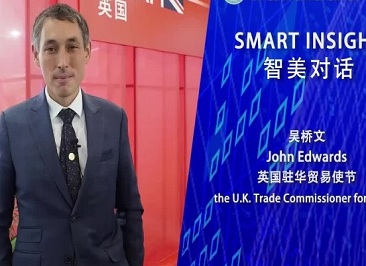Land-sea trade corridor helps China better integrate with global market
Updated:2023-07-27
Xinhua
Guoyuan Port in Southwest China's Chongqing is bustling, with rows of new energy vehicles queuing up to be transported overseas via the New International Land-Sea Trade Corridor.
Launched in 2017, the new corridor is a trade and logistics passage that was jointly built by provincial-level regions in western China and ASEAN countries. It is also one of the key projects under the Belt and Road Initiative (BRI), which was initiated by China.
Trade and investment often follow closely on the heels of infrastructure connectivity. More companies, especially those in western China, are expanding their footprints in overseas markets amid tailwinds from facilitated transportation.
"The new trade corridor has provided us with a more efficient alternative, thus helping us to go global, and has greatly enhanced our competitiveness in the global market," said Wang Di, senior manager of the logistics department at Changan Automobile Co Ltd, a leading vehicle manufacturer based in Chongqing.
For instance, through the trade corridor, Changan's cars can reach Central Asia in only about 30 days, whereas previously it would take about two months.
In the first half of the year, the company exported 178,000 vehicles, with the export volume through the trade corridor 3.5 times more than during the same period of 2022.
As part of its strategy for broader expansion in the Southeast Asian market, the company will put a new plant in Thailand into production in 2024, with an expected annual output of 100,000 units. "We anticipate that the overseas market will account for 30 percent of the total by 2030, with the exports reaching 1.2 million units by then," Wang said.
Chongqing Wankai New Materials Technology Co Ltd is another company benefitting from the route as it seeks more business in the global market. Thanks to the corridor, the food-grade polyethylene terephthalate producer can cut costs and transportation times when selling its products to countries around the globe.
"Compared with the previous shipping route via river and sea, the new corridor offers a shortcut, saving us about 10 days and helping us gain an upper hand in the global market," said Lin Zheng, the company's logistics manager.
"We believe that the trade route will attract more enterprises to develop their business in western China and nurture industrial clusters," Lin added.
Over six years of rapid growth, the land-sea corridor program has enabled western Chinese provinces and regions to form close links with global markets, especially in ASEAN member nations, sending their cargo to 393 ports across 119 countries.
A total of 756,000 twenty-foot equivalent unit containers were transported through the trade corridor in 2022, a 223-fold increase over the same period of 2017. The variety of items transported also expanded to 940 plus from 50 in 2017.
Thanks to the trade corridor, an increasing number of products from China's inland provinces and regions along the route, such as Ningxia Hui autonomous region's red wine and nuts from Xinjiang Uygur autonomous region, have explored broader markets worldwide.
Meanwhile, Cambodian rice, Thai coconuts and mangosteens, and Vietnamese passion fruit and durians can now reach the Chinese market through the trade corridor in just a few days.
The new trade corridor has provided greater market space for China, as well as regions and countries along the route, and has boosted their trade and exchanges, said Liu Wei, director of the logistics and operation coordination center of the New International Land-Sea Trade Corridor.
"It also serves as an embodiment of the concept of a community with a shared future for humanity," Liu said.
China is planning to further strengthen the connection between domestic and external logistics, enhance cooperation with key ports along the route and promote multimodal transportation to ensure the stable growth of cargo volume, Liu added.
Video

John Edwards, the UK trade commissioner for China, praised Chongqing over its rise as a burgeoning center in intelligent manufacturing.





